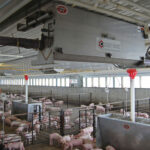Protect the Water
No matter your annual precipitation or what you’re raising, protecting water sources on your land is critical. However, when your yearly rainfall averages only 9 to 11 inches, as it does for rancher Dan Forsea, the task is all the...
Protect the Water
No matter your annual precipitation or what you’re raising, protecting water sources on your land is critical. However, when your yearly rainfall averages only 9 to 11 inches, as it does for rancher Dan Forsea, the task is all the...No matter your annual precipitation or what you’re raising, protecting water sources on your land is critical. However, when your yearly rainfall averages only 9 to 11 inches, as it does for rancher Dan Forsea, the task is all the more crucial.
The Richland, Ore., cattleman raises 650 Angus-Hereford cows at his Eagle Valley headquarters in the winter and on the 15,000 to 20,000 acres of Bureau of Land Management range they graze in the summer. Forsea and his cattle depend on every bit of that precipitation, as well as area creeks and rivers.
As a result, Forsea does all he can to keep the springs, streambeds and riparian areas—the land bordering the creeks and rivers—in top-notch shape. For starters, he depends on fences. “We try to fence off most of the creeks in the valley. If we do graze, we only keep the cattle in there for a short time. The fences keep the cattle where I want them, it makes them easier to manage, and it keeps the streambanks in [good] condition.”
He’s also undertaken other methods, such as placing salt licks on ridges to draw the cattle away from streambeds. When his streambanks do erode, he employs various methods, such as using cables to tie back saplings that then help stabilize the bank.
The creek through his feedlot was probably the most in need of help. “The cattle made a mess. I was going to do the work on my own but the Natural Resources Conservation Service [NRCS] helped me with cost-share money. We fenced it out and put in four troughs. Now we have a good buffer. Even the feedlot is grassy. I could hay it if it wasn’t so rocky.”
For more on how Forsea protects the water and depends on Massey Ferguson equipment to help get the work done, see http://www.myfarmlife.com/farmstead/protect-the-water/.




